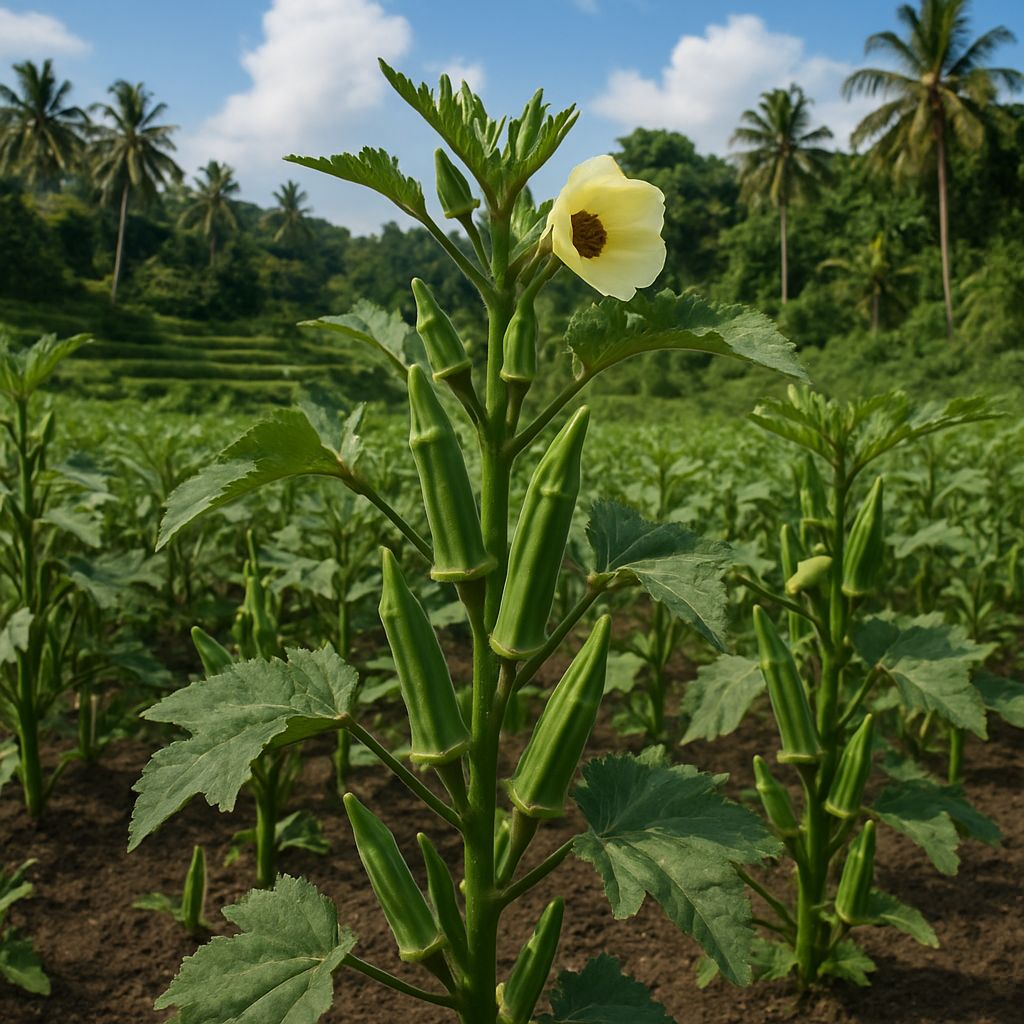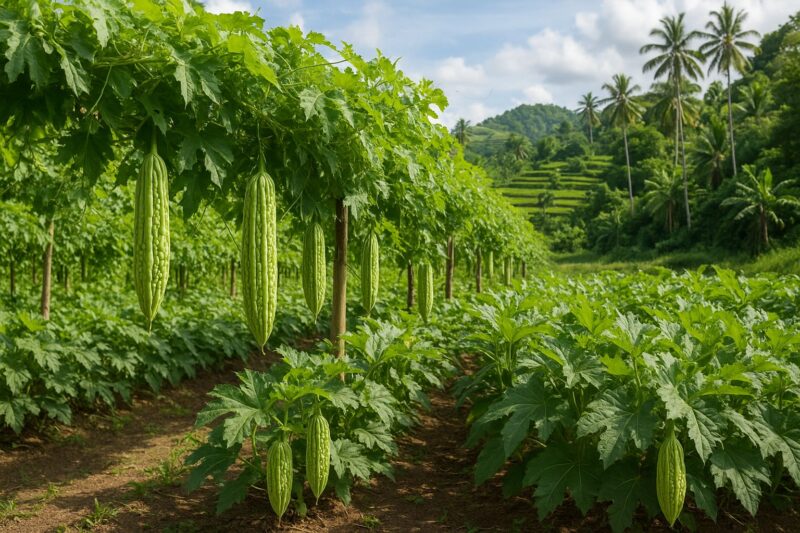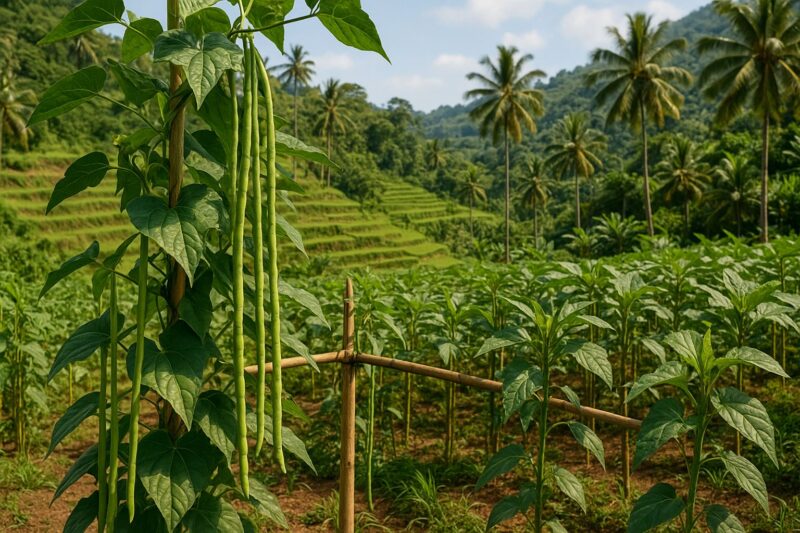Okra—okra to some, ladies’ fingers to others—has become a quiet superstar in Filipino gardens, from rooftop planters in Manila to backyard plots in Bulacan. Its tender, ribbed pods appear in stews, ginataang gulay, or simply sautéed with garlic and onion. Yet, despite its hardiness, okra can surprise even seasoned gardeners under our tropical skies. Over a few seasons of trial and error (and occasional triumphs), I’ve picked up some tips that might save you time—and a few wilted seedlings.
First, selecting the right variety is key. In many lowland provinces—Bulacan included—traditional dwarf types with pods under ten centimeters work well. They mature quickly and rarely flop over under our summer sun. But I’ve also tried the taller varieties from Tarlac, whose eight-inch pods fetch top peso at farmers’ markets in Pampanga. Truth be told, I can’t decide which I prefer—both have their charms. Perhaps you’ll experiment with both, depending on space and market demand.
Soil preparation feels straightforward, but small tweaks make a difference. Okra thrives in well-draining soils with plenty of organic matter. In one of my Bulacan beds, where heavy clay dominates, I blend in aged compost, rice hull charcoal, and a handful of ground limestone to nudge the pH toward the neutral range—around six to seven. In sandy coastal plots I’ve worked on, adding goat manure and coconut coir keeps the moisture up without creating soggy pockets. I suppose it’s a balance, right? Too much moisture invites root rot; too little, and your plants will sulk.
Timing and planting go hand in hand. Across the archipelago, the start of the dry season—March through April—is prime okra window, when rains are light but the sun is strong enough to spur germination. I sow seeds directly into in-ground furrows or containers, spacing them roughly forty centimeters apart. Once through the soil, young plants need regular checks, because the first two weeks are make-or-break. I’ve learned to water in the cool morning, so the soil stays warm at night but never waterlogged.
Sunlight is non-negotiable. Okra, in my experience, demands at least six hours of direct light. A shaded veranda doesn’t cut it—unless you’re growing microgreens instead. In Bulacan’s wide-open yards, that’s rarely a problem. But if you live in a gated community with tall walls—like a cousin of mine in Quezon City—you’ll need container placement that catches the sun’s path from east to west.
Pests seldom overwhelm okra, though the occasional flea beetle or caterpillar shows up. I tend to scout leaves every few days, looking for tiny holes or chewed edges. Handpicking is often enough, but for larger plots, a gentle spray of neem extract—or a homemade chili-garlic infusion—helps keep populations down. Make sense? It’s not perfect, but it’s kinder to beneficial insects than blasting everything with chemical insecticides.
Fertilization is where things get, well, a bit personal. I give a base dressing of compost at planting, then side-dress with a balanced organic mix—often a blend of rice bran, bone meal, and wood ash—once flowering begins. Some growers in Cavite swear by fish-based liquid fertilizer; I’ve tried it and felt the difference in vigor, though I did end up with more aphids than I bargained for. Go figure—too much nitrogen can invite sap-sucking pests.
Flowering starts about six weeks in, with pale yellow blooms opening each morning. Pollination happens quickly; within a day, small pods set at each blossom site. Harvesting is delightfully simple: pick pods when they’re two to three inches long, before seeds become tough. Frequent picking—every two to three days—encourages continuous flowering and prolongs your season into the rainy months, even as the monsoon arrives.
One memorable season in Bulacan, a sudden downpour followed by a heat wave stressed my okra beds. I worried the plants would sulk, but instead they bounced back, flowering more prolifically once the skies cleared. That resilience, I think, is what makes okra such a rewarding crop for Filipino growers—smallholders and urban gardeners alike.
Whether you grow a clutch of containers on a balcony or cultivate rows in a backyard plot, okra offers quick returns, minimal fuss, and a versatile harvest. It might not make headlines like rice or corn, but for everyday cooking and local markets, it has carved its own niche. Give it compost, sun, and regular harvests, and you’ll find those ribbed green pods cropping up steadily, season after season.
I’m open for consulting and speaking opportunities on vegetable cultivation and sustainable farming across the Philippines. Let’s grow something great together.
#Okra #LadiesFingers #PhilippineFarming #SustainableAg #HomeGarden #ConsultingAvailable #SpeakingOpportunities




